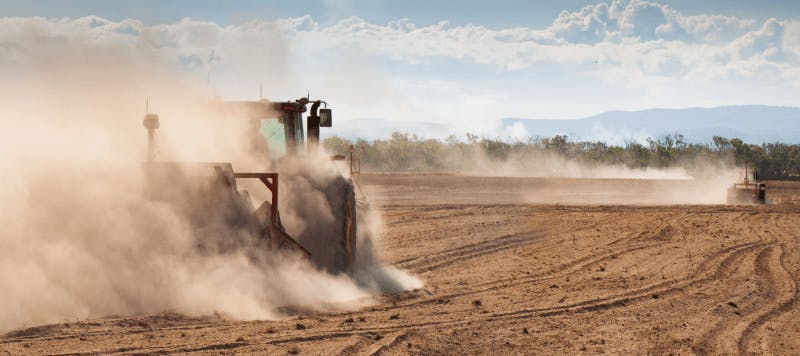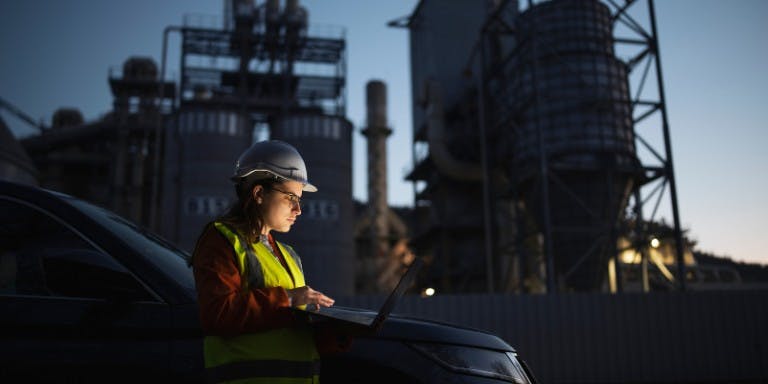First published on Wednesday, April 24, 2024
Last updated on Wednesday, April 24, 2024
Climate change is a global issue that affects every aspect of our lives.
Today, 1.2 billion jobs are at risk because of environmental decline. The ILO predicts that in less than seven years, up to 3.8% of total working hours could be lost to climate-induced high temperatures.
And it isn’t just the heat we need to look out for, but pollution, increased UV radiation, extreme weather effects, increased prevalence of diseases, cancer, and sadly, much more.
We get it, it doesn’t make for light reading. But understanding the threats posed by climate change to health & safety at work is necessary to manage and reduce the risks to you and your team.
And it’s not all doom and gloom; we wouldn’t be BrightHR if we didn’t give you insights to help you tackle the big problems!
Which jobs are most at risk from climate change?
Climate change is a global issue facing all workers, but there are some jobs and industries most at risk. Outdoor workers, as you might have guessed, are one of those groups, including those in:
- Construction
- Landscaping
- Forestry
- Land surveying
- Agriculture
- Oil field and utility work
- Firefighters
But don’t be fooled into thinking it’ll be business as usual for indoor workers. They’ll still be affected by risks like air pollution and extreme weather.
Vulnerable groups affected by climate change
There are also some employees who are likely to be more affected and need additional support.
They include:
- Women and pregnant workers are at a higher risk of heat-related illnesses like heat exhaustion, heat stroke, and dehydration. Due to physiological differences, women may also be more susceptible to heat stress than men.
- Older workers are particularly susceptible to heat stress, poor air quality, exposure to infectious diseases, and weather extremes.
- Workers with disability are shown to have generally poorer health outcomes and are especially susceptible to heat-related illnesses and difficulties accessing healthcare services.
What are the risks to my business?
You’re probably already aware of the more dramatic examples of climate change and how they can affect your workplace, but many things can go under the radar.
From a work performance point of view, a recent study concluded there is on average a 2% decrease in work performance per degree C temperature rise when the temperature is above 25 C°.
In its extremes, high temperatures can lead to heat stress, which can increase the risk of workplace injuries. For example, when workers are feeling the heat, their reaction times are adversely impacted. This can greatly heighten the risks of already high-risk tasks like driving.
Temperature extremes can also worsen chronic conditions such as cardiovascular disease, respiratory disease, cerebrovascular disease, and diabetes-related conditions. This means more employees might be forced to take long-term time off, resulting in more absences and impacting their productivity.
What can I do to protect my workforce?
Your approach will depend on your industry and place of work. But generally, your policies should be broken down into two categories: reducing the risk where possible and adapting to that risk.
Using an end-to-end health & safety software like BrightSafe can help you identify and find the most effective ways of handling hazards unique to your business.
The best place to start is by introducing a workplace-level risk assessment to protect the health & safety of your workers who may be exposed to climate change-related hazards.
Once identified, those hazards should be managed with specific control measures.
Examples of control methods
An effective method is introducing engineering controls such as air conditioning, cooling fans, mechanical equipment to reduce manual work, or cooled seats and benches.
Where possible, introduce administrative measures such as limiting time in the heat, and encouraging more regular breaks. Want an easy and effective way to track employee breaks? Discover Blip by BrightHR, which lets your workers track their breaks so you can make sure they spend enough time recovering in a cool environment.
PPE measures are less effective but can be used if no other options are available.
Protect your business and your staff this World Day for Safety and Health at Work 2024 and beyond
This World Day for Safety and Health at Work highlights the new and intensified occupational hazards provoked by climate change. These risks need to be addressed properly with workplace risk assessments and action taken by employers to mitigate these new and evolving health & safety concerns.
Not sure where to start? Discover the easy way to manage workplace health & safety with software and 24/7 advice from BrightSafe. Learn more about our comprehensive library of risk assessments and accessible e-learning courses, helping you stay on top of the risks of climate change.
Book a demo with BrightSafe today!





